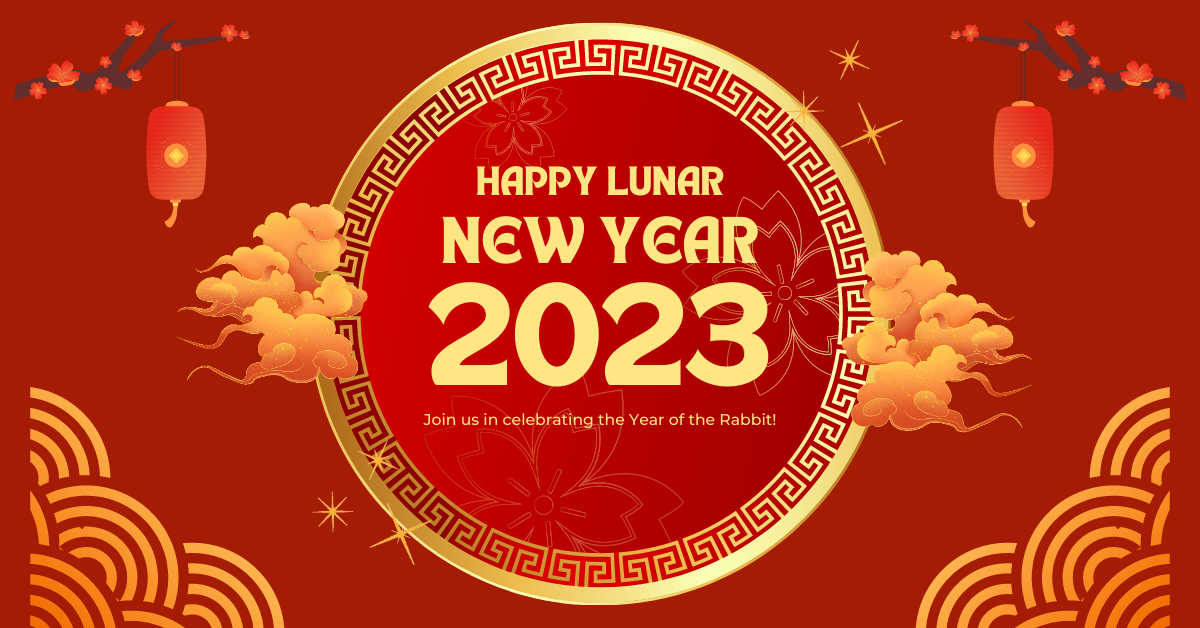Chinese New Year, also known as the Spring Festival or Lunar New Year, is the most important holiday widely celebrated across Asia and among Asian communities. As the fresh start of the year, people celebrate unity and goodwill and usher in good fortunes such as wealth, wisdom, health, and happiness. This year, the holiday starts on Sunday, January 22nd, 2023.
The rat, ox, tiger, rabbit, dragon, snake, horse, sheep, monkey, rooster, dog, and pig are the twelve zodiac animals representing each year by sequence and they are believed to bring a different future based on their very own characteristics. 2023 is the year of the rabbit, the luckiest animal of the twelve zodiacs and rabbits are often designated as grace, peace, and patience, so 2023 is predicted to be a year full of hope and positivity.
The History
About 3,500 years ago, people held sacrificial ceremonies in honor of gods and ancestors at the beginning or the end of each year in the Shang Dynasty (1600-1046 BC). Then it became a more popular event to worship nature for a good harvest at the turn of the year in the Zhou Dynasty (1046-256 BC). The date of Chinese New Year was established and fixed in the Han Dynasty (202 BC – 220 AD). Celebration customs and entertaining activities such as getting together with families, setting off firecrackers, watching dragon and lion dances, and enjoying lantern shows arose afterward. In the modern days, this festivity evolved from a religious one to a social one. In 1949, Chinese New Year was listed as a national holiday in China.
In Chinese mythology, there was a legendary creature called “Nian” who would come on the last day of the year to attack villages. People had to hide in their homes and prepare a feast to worship ancestors and gods and pray for safety and harvest. It was also believed that the color of red and the noise of fireworks would scare away “Nian.”
The Traditions
Different regions have different traditions, and many customs have been observed for thousands of years. However, regardless of where you are, returning home to be with family is a ritual and a family reunion dinner is a must for this holiday. Additionally, people create and hang couplets consisting of auspicious words and decorate their homes with the “fu” character (meaning happiness and blessing in Chinese) upside down (meaning “arrival” in Chinese) to welcome good luck. Gifting red envelopes with money is also a common Chinese New Year tradition. The red envelopes are usually given to children by the elderly to allow them to prepare for a safe and sound new year. Other customs, including making dumplings from scratch, attending temple fairs, and watching lantern shows are also enjoyed in various areas.
My Story
Chinese New Year is associated with family unions, red envelopes, and fireworks in my childhood memory. Prior to this most joyous holiday, my family would put up red good-luck couplets (Chun Lian) to decorate the doors and do New Year shopping for gifts and food, symbolizing blessing and prosperity. Growing up, I always loved dressing up in new clothes and going to my grandparents’ house to play with my cousins on New Year’s Eve. Sitting at the enormous round table full of colorful plates with delicious food, we would chat and laugh. After a 10-course dinner (Nian Ye Fan), adults would play mahjong or card games and kids would watch the New Year’s Gala (Chun Wan) on TV. We could have so much fun by just being together. Collecting red envelopes packed with lucky money from relatives was the highlight of the night and staying up past midnight to watch the spectacular fireworks was my favorite moment. The grand finale was believed to bring a great year ahead. I haven’t really celebrated this holiday since I came to the United States at the age of 18, but I have never ceased searching for Chinese New Year vibes and finding a way to connect to where I grew up.
More Facts
What do you eat for Chinese New Year?
- Dumplings – they are shaped like ancient Chinese gold ingots. Some regions believe that the more dumplings you eat, the more money you can make in the new year. The process of making dumplings also unites family members because a lot of involvement is required.
- Fish – the pronunciation of “fish” in the Chinese language is the same as the word “surplus.” Having fish on the table translates to having a surplus at the end of the year. Families also tend to save leftovers for the next day to wish for a new year with abundance.
- Rice cake – the name of “rice cake” sounds the same as “a high year.” By eating rice cake, people are hoping for better grades at school or higher salaries at work.
- Spring rolls – this appetizer is served at the table to celebrate the coming of spring. Spring rolls also resemble gold bars which are symbolic to having more savings and earnings.
- Longevity noodles – as the name implies, longevity noodles represent the hope of staying healthy and living longer. The texture of the noodles is even and smooth, which sets the expectation and outlook of a peaceful year.
- Glutinous rice balls – this sweet dessert is normally served after a family reunion meal on special occasions including Spring Festival, Lantern Festival, and Winter Solstice Festival. They have round shapes that represent completeness and togetherness.
- Citrus fruits – mandarin oranges and tangerines are appreciated during Chinese New Year because “success” and “luck” are part of the Chinese translation. Additionally, the round shape and golden color are popular symbols of fullness and wealth.
- Eight-treasure rice – this traditional Chinese New Year treat includes eight major ingredients: red dates, longan, winter melon, dried apricot, red bean paste, lily bulbs, lotus seeds, and goji berries. The number “eight” sounds very similar to “enrichment” in Chinese. Eating the eight-treasure rice represents everyone’s wish for prosperity and improvement in the upcoming year.
How long is Chinese New Year?
Typically, Chinese New Year is a sixteen-day celebration, starting from Chinese New Year Eve and ending with the Lantern Festival when there is a full moon.
Why does the holiday start at a different time each year?
The Lunar calendar determines the date of Chinese New Year, a dating system that is based on the synodic monthly cycles of the phases of the moon and is different from the Gregorian (or Solar) calendar that we generally use. While it varies from year to year, the date of Chinese New Year usually falls between January 21st and February 20th after the conversion from the Lunar to the Solar calendar.
Why is the color red significant?
Red is considered a symbol of joy, virtue, and sincerity in Chinese culture. Therefore, the color is prevalent for holiday celebrations, including Chinese New Year. Most of the garments and decorative objects are painted in red for the spring festival.

 Previous
Previous






